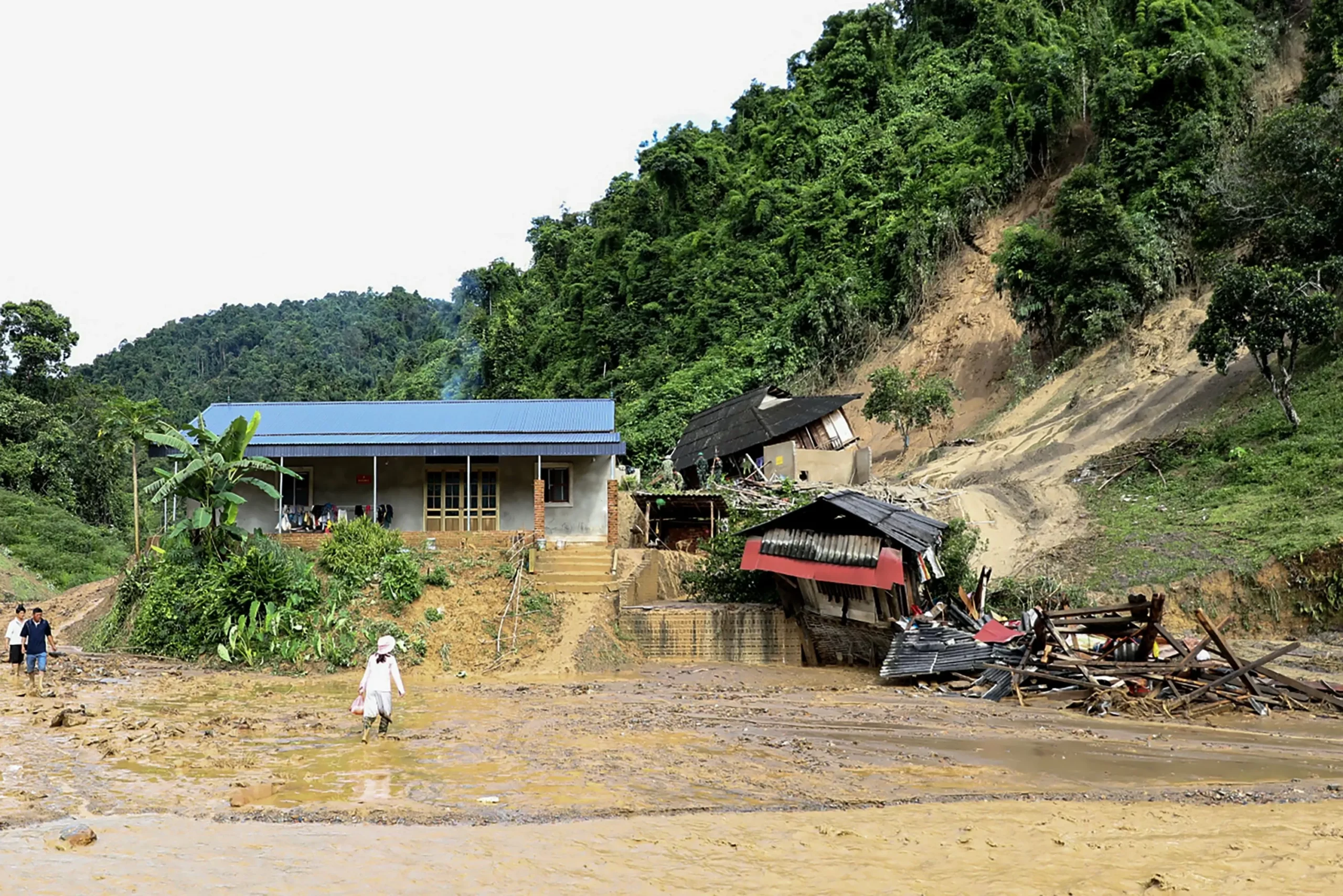At least seven people have lost their lives and countless others have been displaced after flash floods and landslides ravaged northern Vietnam. The disaster, which was triggered by heavy rainfall, has left a trail of destruction in its wake.
According to disaster officials and state media, the floods and landslides have caused significant damage to homes, infrastructure, and agriculture in the affected areas. The provinces of Lai Chau, Ha Giang, and Lao Cai have been the hardest hit, with many villages and towns completely submerged in water.
The heavy rain, which began on Monday, has caused rivers to overflow and triggered landslides in mountainous areas. The sudden and intense nature of the floods caught many residents off guard, leaving them with little time to evacuate. As a result, many have been left stranded and in need of urgent assistance.
The Vietnamese government has mobilized rescue teams and emergency services to assist those affected by the disaster. They have also set up temporary shelters to provide food, water, and medical aid to those who have been displaced. However, the scale of the disaster has made it challenging to reach all the affected areas, and many are still waiting for help to arrive.
The floods and landslides have also caused severe damage to roads and bridges, making it difficult for rescue teams to reach remote areas. This has further complicated the rescue efforts and delayed the delivery of aid to those in need.
The disaster has not only claimed lives and caused destruction, but it has also had a significant impact on the livelihoods of many people in the affected regions. The heavy rain has destroyed crops and swept away livestock, leaving farmers without a source of income. This has added to the already dire situation of those who have lost their homes and belongings.
The Vietnamese government has promised to provide assistance and support to those affected by the disaster. Prime Minister Nguyen Xuan Phuc has ordered local authorities to prioritize the rescue and relief efforts and ensure that all affected communities receive the necessary aid.
In the face of this tragedy, the people of Vietnam have shown resilience and solidarity. Many have come together to help their fellow citizens, offering food, shelter, and other forms of support. This spirit of unity and compassion is a testament to the strength and resilience of the Vietnamese people.
The disaster in northern Vietnam serves as a reminder of the devastating impact of natural disasters and the urgent need for preparedness and disaster management. As climate change continues to bring about extreme weather events, it is crucial for governments and communities to work together to mitigate the effects of these disasters and build resilience.
In the midst of this tragedy, there is also hope. The Vietnamese government has announced plans to invest in disaster prevention and response measures to better prepare for future disasters. This is a positive step towards ensuring the safety and well-being of its citizens.
As the rescue and relief efforts continue, it is essential to remember those who have lost their lives and those who are still in need of help. Let us also keep in mind the bravery and dedication of the rescue teams and volunteers who are working tirelessly to assist those affected by the disaster.
In the face of adversity, the people of Vietnam have shown strength, compassion, and unity. Let us continue to support and uplift each other during this difficult time and work towards building a more resilient and disaster-ready nation.




![Complete BritRail Pass Guide [Types, How to Use It, Pros + Cons]](https://inside-news.uk/wp-content/uploads/2025/06/00221EB4-BCA2-4DBB-6CD4-83DBC37D71FA-120x86.webp)












